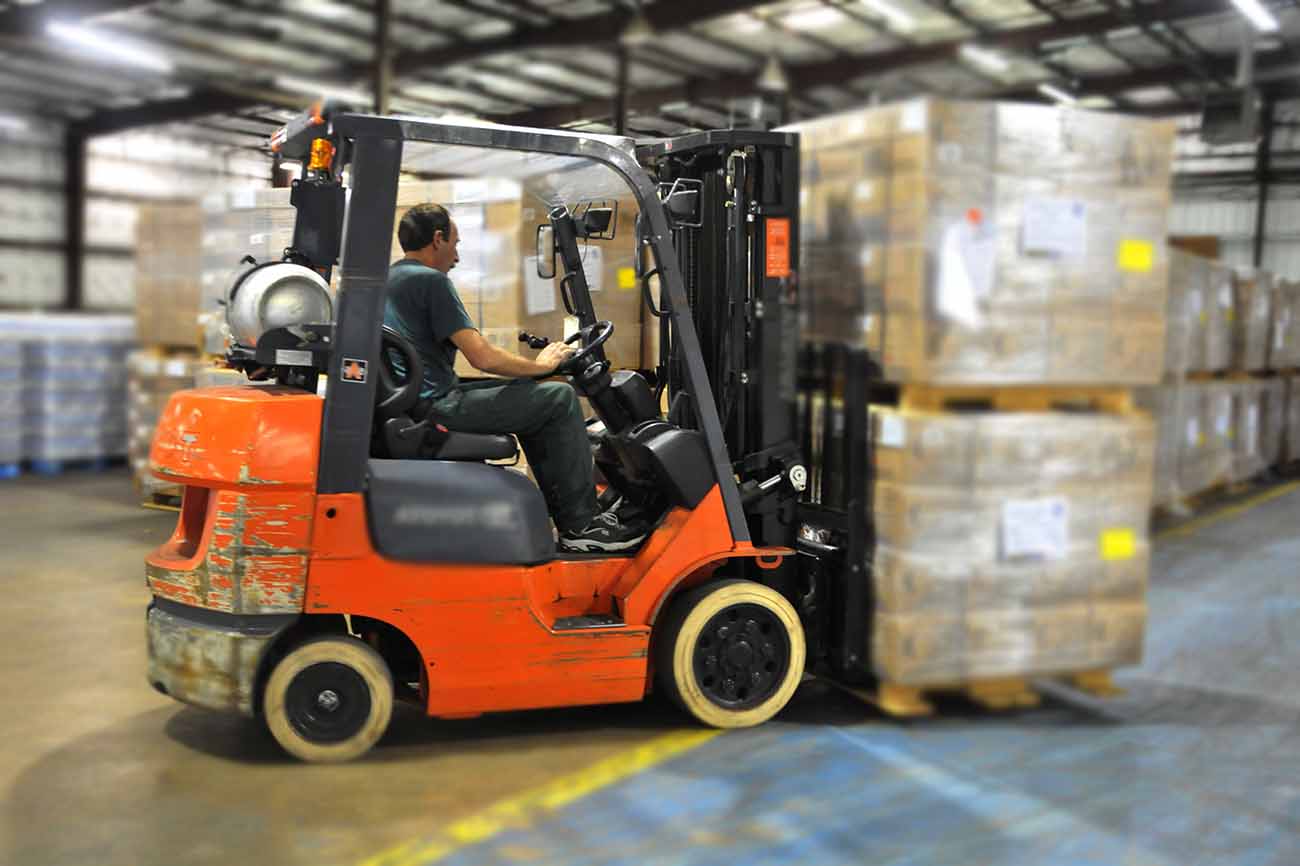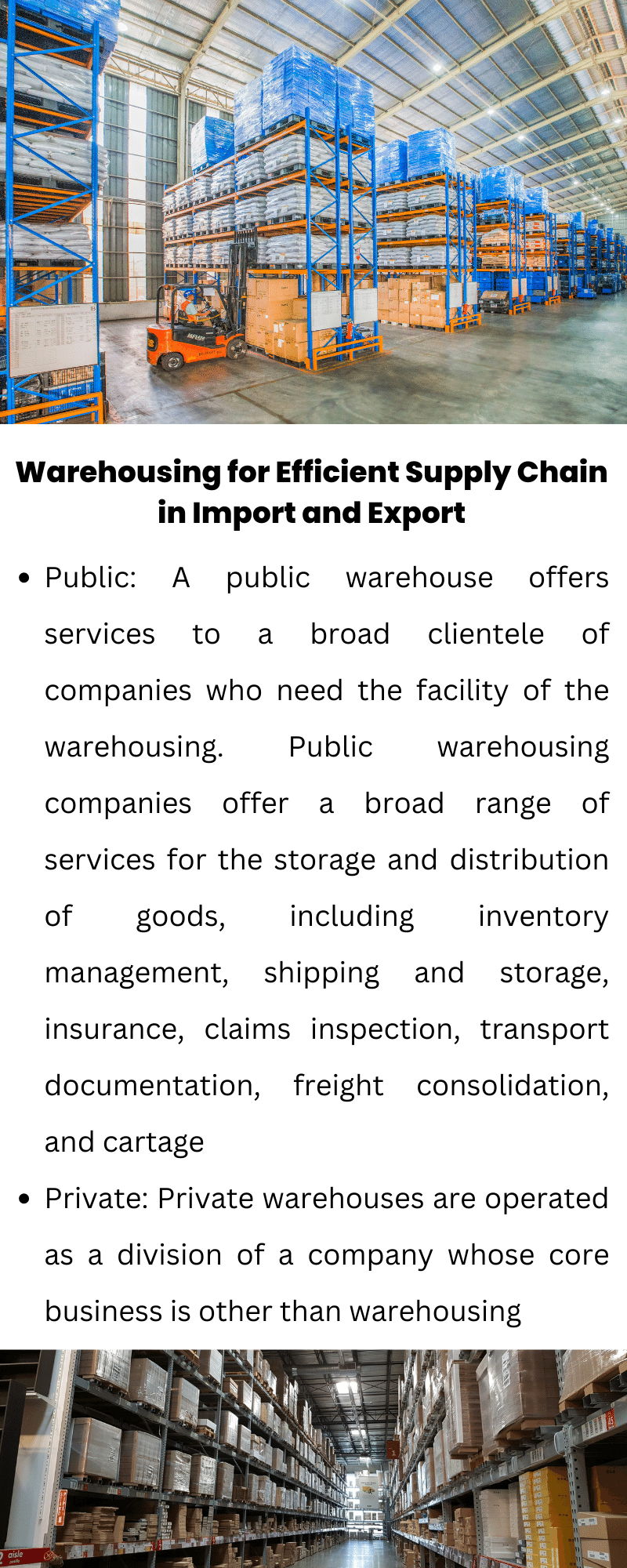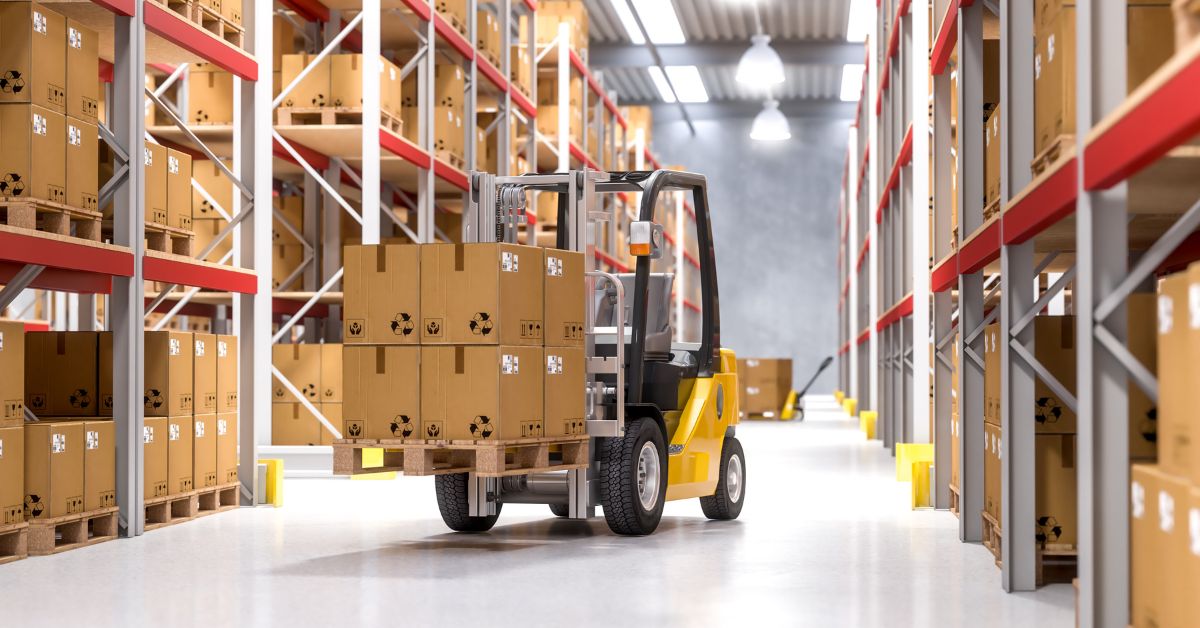It is very important to have an efficient supply chain and warehousing facilities to gain a competitive advantage in your business among your competitors.
Efficient warehousing and storage reduce cost and time management to deliver the product to the customers.
Table of Contents
- Warehouses and Storage Facilities Categories
- Different Types of Public Warehouses
- Advantages of Public Warehouses and Storage Facilities
- Disadvantages of Public Warehouses and Storage Facilities
- Advantages of Private Warehouses and Storage Facilities
- Disadvantages of private warehouses and storage facilities
- Factors Influencing the Public or Private Warehouse Decision
- The Functions of Warehousing
- Warehouse Layout and Design
- Equipment Selection for Warehouse Handling
- Importance of Efficient Warehouse handling Systems
Warehouses and Storage Facilities Categories
Warehouses and storage facilities can be divided into 2 categories:
- Public: A public warehouse offers services to a broad clientele of companies who need the facility of the warehousing. Public warehousing companies offer a broad range of services for the storage and distribution of goods, including inventory management, shipping and storage, insurance, claims inspection, transport documentation, freight consolidation, and cartage.
- Private: Private warehouses are operated as a division of a company whose core business is other than warehousing.
Different Types of Public Warehouses
Let us analyze the different types of Public warehouses we can get:
- General non-food-merchandise warehouses tend to be large, one-story facilities with high ceilings, equipped with sprinklers and burglar alarms. The facility will have multiple truck-level doors to handle the in/out activity of the merchandise.
- Temperature-controlled warehouses (to keep goods heated, refrigerated, cooled or frozen).
- Controlled drugs and narcotics warehouses have a high security requirement because of the sensitivity of the goods. The warehousing company must have a pharmacist on staff to handle product. Accurate record-keeping is also necessary.
- Tire and odor-producing-product warehouses.
- Dangerous goods storage warehouses. Warehouses facilities must comply with strict environmental laws and the Storage of Dangerous Goods Act. The cost of operating this type of facility is very high; therefore, operators can command premium rates for their services.
Advantages of Public Warehouses and Storage Facilities
- No initial big capital investment from the client end: The client avoids tying up his capital in buildings, land, and handling equipment, as well as costs associated with starting up the operation and training his own personnel.
- Flexibility in space and distribution requirements: The public warehouse option allows the user to contract for as much storage space as needed to meet practical requirements.
- Reduction of capital risk because of variable cost
- Economics of scale is met in public storage: Public warehouses are able to achieve economies of scale that would not be possible for a small firm. This is because public warehouses handle the warehousing requirements of a number of firms, and their volume allows the employment of full-time warehousing staff.
- Flexibility from the client end on taking the service: Public warehouses require only short-term contracts
- Prior knowledge of storage and handling cost to benefit in forecasting the total cost.
Disadvantages of Public Warehouses and Storage Facilities
- Control is less on the client hand in using public warehouses
- Specific needs of the client may not be fulfilled in public storage
Private Warehouses and Storage facilities
Advantages of Private Warehouses and Storage Facilities
- Control of the work: Control is the major advantage private warehouses have for the manufacturer, the importer, and the distributor over their public counterparts. This greater degree of control allows the firms to more easily integrate the warehousing function into the total distribution system of the company.
- Flexibility of the design and operation of the warehouse, to more efficiently develop the supply chain.
Disadvantages of private warehouses and storage facilities
- Lack of flexibility to expand the facility in rush period or contract the usage when not in demand.
- High initial cost and capital
It is seen that many major manufacturers or importers find it advantageous to use a combination of public and private warehouses. Private warehouses are used to handle the basic inventory levels required for least-cost distribution and public warehouses used to store peak season volume goods requirements.
Factors Influencing the Public or Private Warehouse Decision
| Factors | Public Warehouses | Private Warehouses |
| Initial Investment | None | High: Large facility, equipment and employee cost |
| Control | Moderate | High |
| Operating Cost | High, due to profit margin taken by the independent warehousing company that provides the warehouse facility | Low, if have the sufficient volume |
| Risk | Minimum | High, due to demand and supply of sales fluctuation |
| Economics of Scale | Possible, due to serving many customers | Dependent on company’s size and volume |
| Storage and handling | Know exact charges for decision making | General, can only estimate |
The Functions of Warehousing
Warehousing has two basic functions: storage and movement.
Storage: Storage may be either temporary or permanent.
- Temporary storage emphasizes the movement function of the warehouse and involves only the product that is necessary for basic inventory turnover.
- Permanent storage is the storage of inventory in excess of that required for normal replenishment. Permanent storage may be required because of seasonal or erratic demand, the conditioning of products such as fruits and meats.
Movement: Movement of the goods includes receiving, transfer, customer order selection and shipping.
Warehouse Layout and Design
A good warehouse facility will have the functions to increase output, improve product flow, reduce costs, improve service to customers, and provide better employee working conditions.
Below is a possible layout for a warehouse to construct:
| GOODS ENTRY GATE |
| RECEIVING AREA |
| STORAGE AREA |
| ORDER PICK STORAGE AREA |
| PACKING AREA |
| STAGING AREA |
| EXIT GATE FOR SHIPPING OUT |
No matter what layout is selected, it is vital that all available space be utilized as fully and as efficiently as possible, in order to maximize the space utilization and the subsequent return on investment.
Equipment Selection for Warehouse Handling

The forklift truck is a vital part of almost every warehouse operation. It is the basic piece of equipment in every warehouse. Other examples of standard systems include hand trucks, electric tractors, carts, cranes, and platform trucks. In each, there is direct human involvement (operation) with the piece of equipment.
Importance of Efficient Warehouse handling Systems
- Increased productivity per employee through increased output.
- Reduced operating expenses.
- Optimized machine utilization.
- Increased space utilization.
- Reduced damage to inventory.
- Increased customer service levels.
- Reduced employee fatigue.
- Reduced accidents.
- Improved flow of material.
Overall the importance of warehousing and storage facilities are immense in overall supply chain process. The decision to choose public, private or mixture of both warehousing facilities depends totally on the task and operation of the company.

